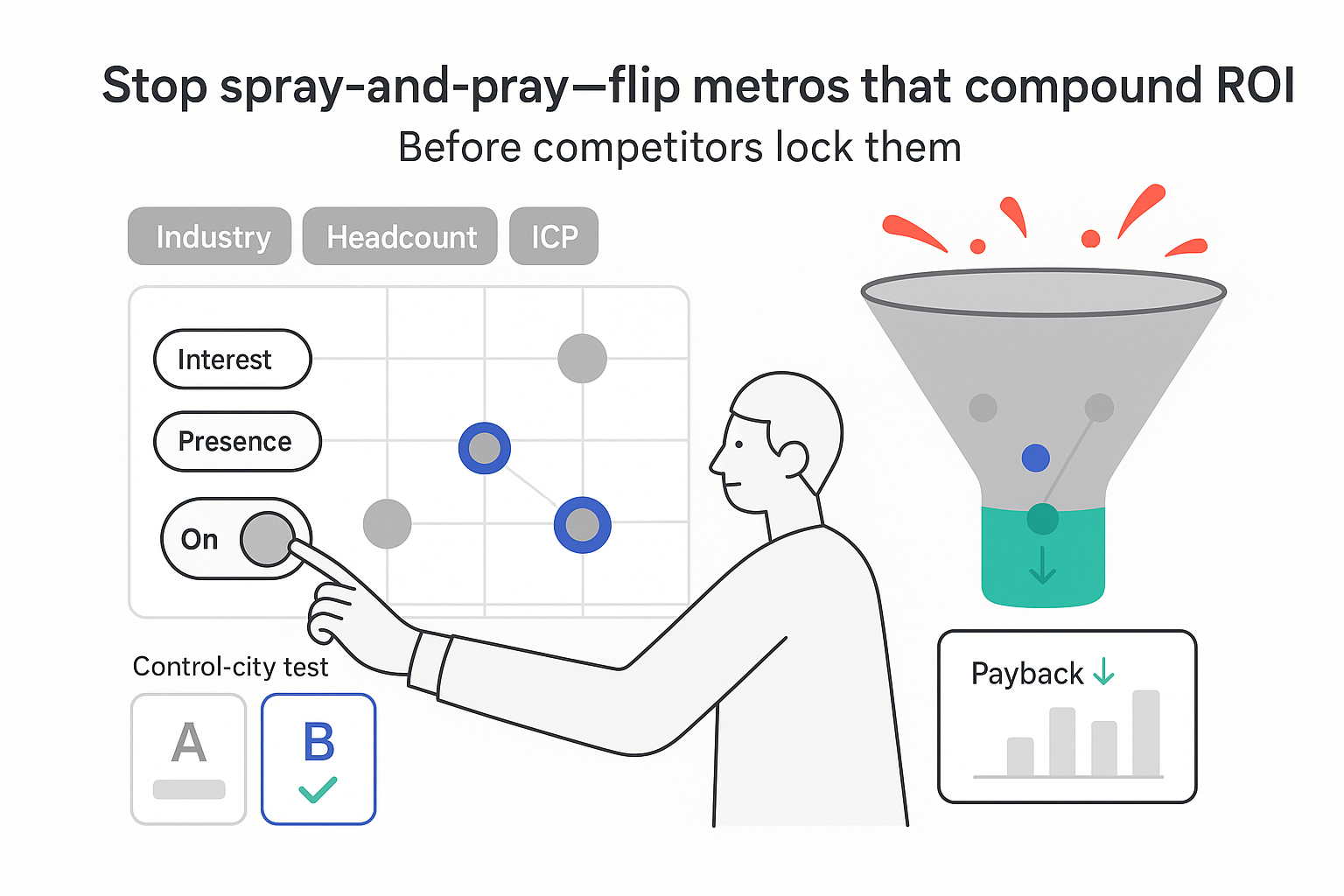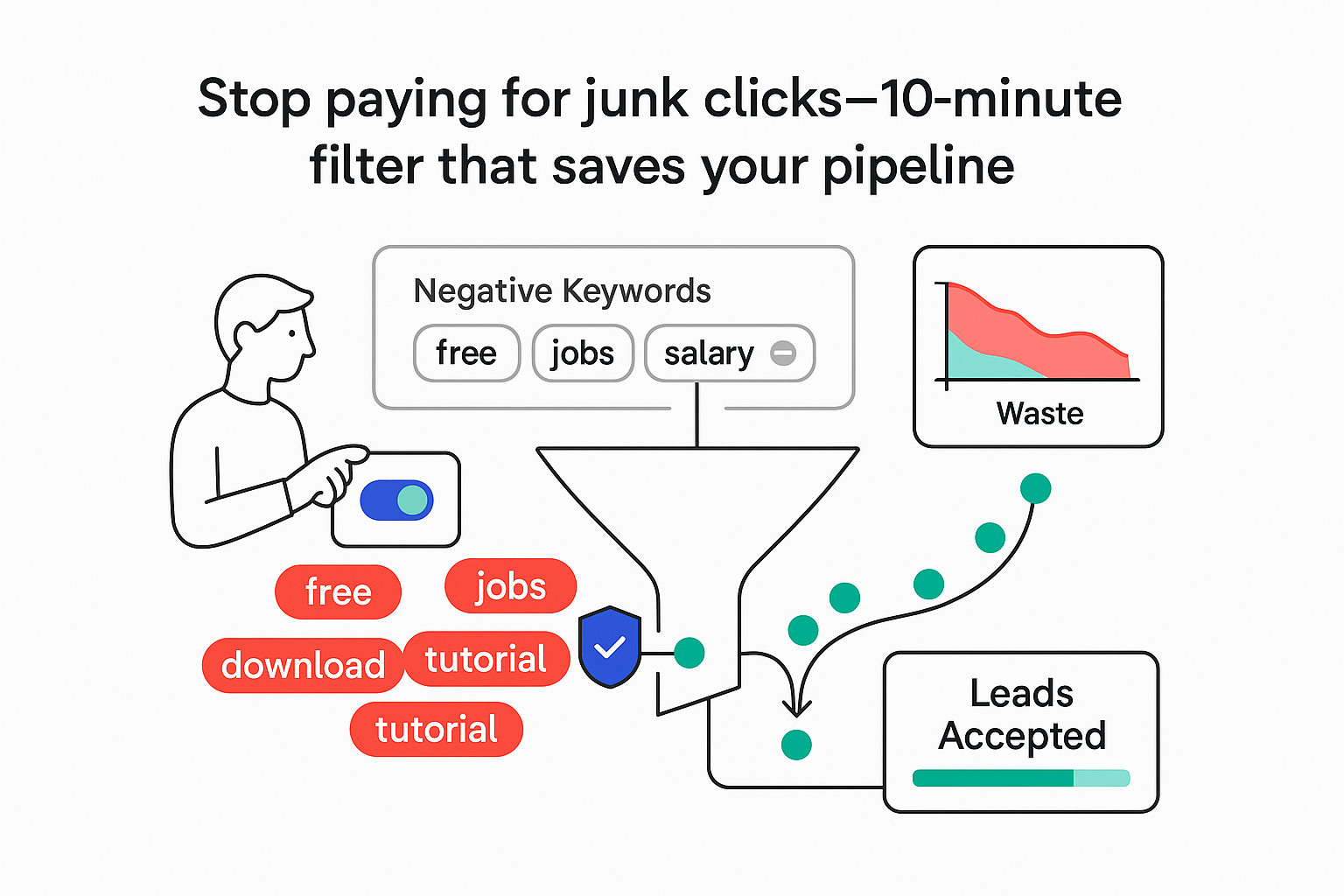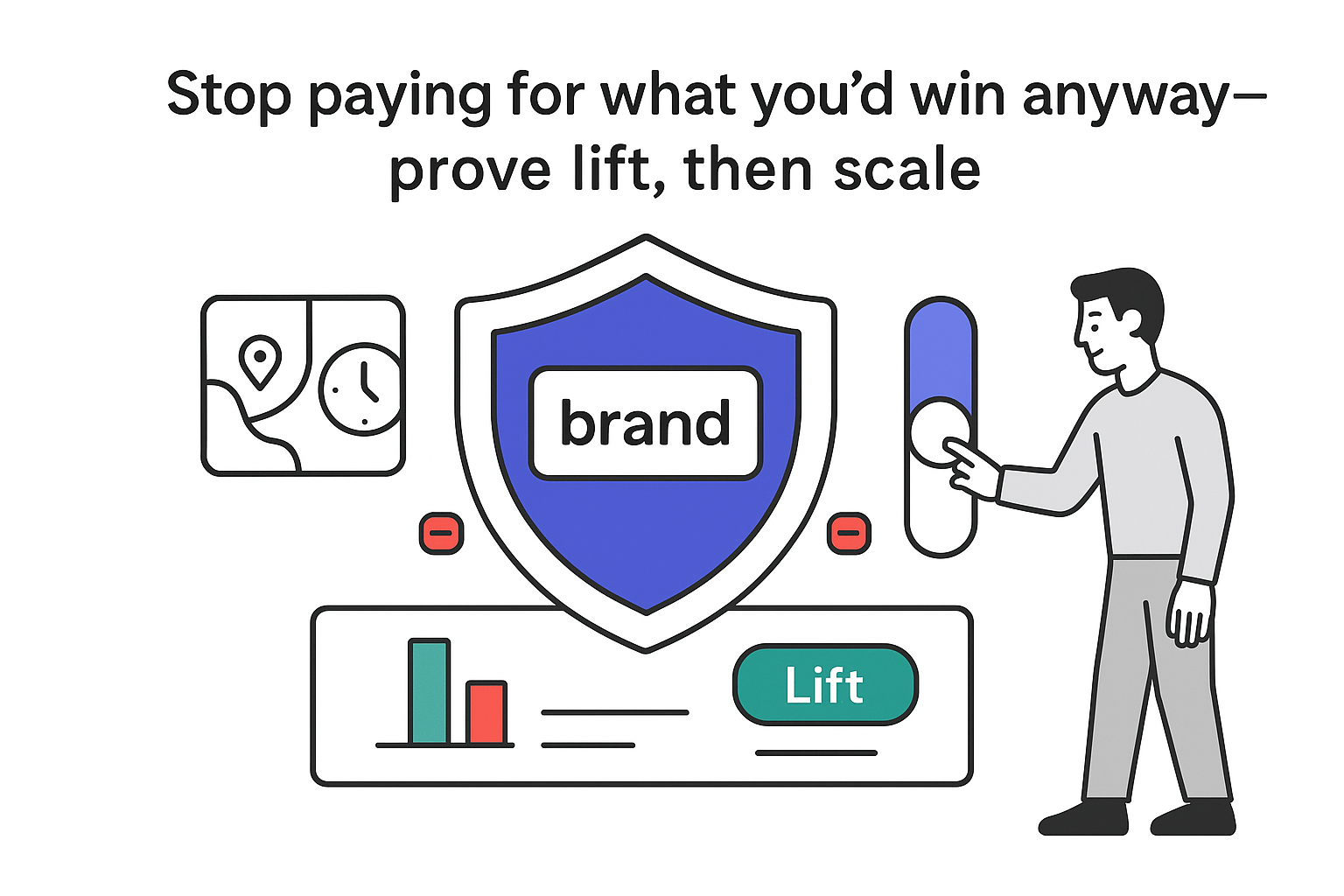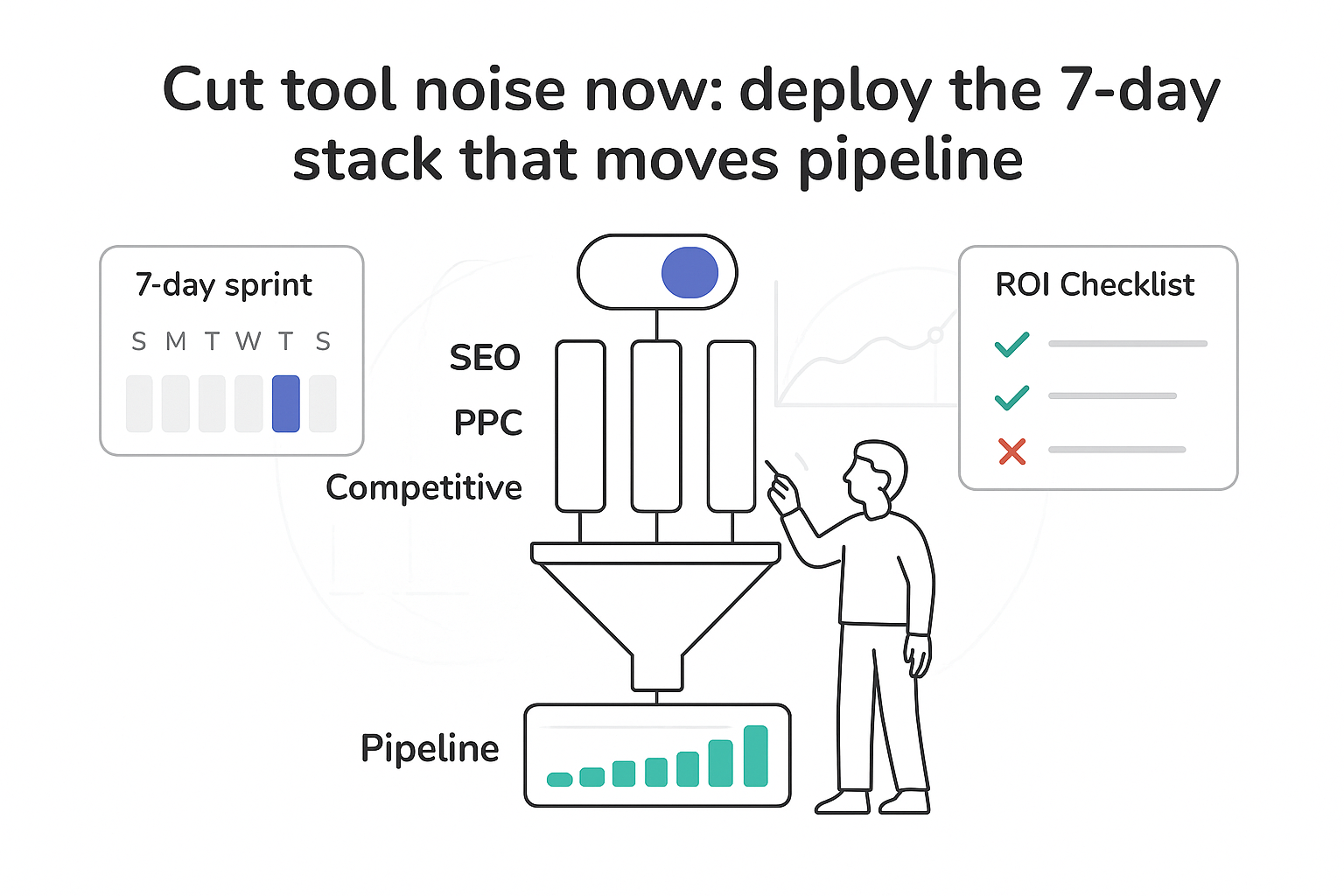Choosing the right SEO partner can feel like a guess when I am juggling pipeline targets and tight calendars. I make it a data-led decision: I put outcomes first, get ownership in writing, and look for early traction without falling for promises that sound too good to be true.
How I choose the best SEO agency for B2B service companies
- Outcomes first: I ask for target KPIs by stage. Examples I use: non-branded organic traffic quality, demo requests, SQLs, pipeline influenced, and a payback timeline.
- Accountability: I require named owners, weekly updates, monthly strategy reviews, and a playbook for missed goals.
- Time to first wins: I expect technical fixes, content refreshes, and striking-distance wins inside 30 to 90 days.
- Required resources: I confirm what my team must supply - SME access, approvals, dev time, and CRM read access for attribution.
- Budget bands: I lock the monthly range before scoping, plus any add-ons for content production, digital PR, and development.
- No miracle claims: I avoid teams that sell guaranteed rankings or instant revenue. Early signals are fine; certainty on timelines and exact outcomes is not.
KPI snapshot example (illustrative)
| Metric | Baseline | Target 90 days | Target 6 months |
|---|---|---|---|
| Qualified demo requests from organic | 20 | 35 | 80 |
| SQLs from organic | 12 | 20 | 50 |
| Pipeline influenced by organic | 180k | 300k | 900k |
Pricing, scope, and ROI guardrails
Common models and ranges I see (for companies around 50k to 150k MRR)
- Retainer: 6k to 20k per month based on scope and speed.
- Project: 12k to 60k for audits, migrations, or a three-month sprint.
- Performance hybrid: 4k to 10k base plus a bonus tied to opportunities or revenue attribution.
What is typically included
- Core: Strategy, technical audits, on-page work, briefs, reporting, and light RevOps sync.
- Common add-ons: Content production, digital PR and link acquisition, CRO testing, development hours, analytics setup, and data warehousing.
ROI guardrails I use to stay honest
- CAC payback window: I aim for 9 to 12 months from organic for new cohorts.
- LTV to CAC: 3:1 as a floor; 4:1 is healthier for services.
- Runway: I plan for 6 to 12 months of steady investment with quarterly checkpoints.
Simple cost-to-pipeline calculator I use
Monthly fee x Payback months x LTV:CAC floor
= Minimum pipeline influenced target for the period
Example:
12,000 x 9 x 3 = 324,000 in pipeline influenced across nine months
I plug in my numbers, then ask the agency to pressure test the plan and underlying assumptions.
What work actually moves pipeline
-
Technical SEO remediation
- Moves: crawlability, indexation, and page speed - leading indicators for qualified traffic and better landing-page conversion.
- What I expect: an audit in weeks 1-3, prioritized fixes, dev tickets, QA, and re-crawl verification.
- Cadence/SLA I ask for: weekly progress notes and fix verification within five business days.
- My role: dev or web admin support for deployment.
-
Content strategy by buying stage
- Moves: MQLs, SQLs, and ACV by covering problems, use cases, comparisons, and proof.
- What I expect: a keyword map, topic clusters, briefs, SME interviews, and a publishing plan.
- Cadence: two to eight net-new or refreshed pieces per month depending on scope.
- My role: one to two SMEs per month for interviews and approvals.
-
Digital PR and link acquisition
- Moves: authority and rankings for competitive terms, which drives qualified traffic.
- What I expect: story hooks, outreach, placements, and link quality reporting (relevance over raw volume).
- Cadence: monthly campaigns with target domain rating and topical fit.
- My role: brand guardrails and spokesperson availability if needed.
-
Conversion rate optimization
- Moves: demo requests, meeting-booked rate, and pipeline per visit.
- What I expect: research, a test plan, copy and design variants, and clear test readouts.
- Cadence: one to two tests per month after baseline is established.
- My role: approvals and access to analytics/testing tools.
-
Analytics and RevOps alignment
- Moves: accurate attribution and true SQL pipeline tracking.
- What I expect: GA4 and Search Console setup, Looker Studio dashboards, CRM views in HubSpot or Salesforce, and W-shaped or position-based attribution defined and documented.
- Cadence: weekly snapshots and a monthly business review with insights and next steps.
- My role: CRM admin read access and alignment with sales leadership.
Service-to-metric matrix (directional)
| Service | Traffic quality | Demo requests | SQLs | Pipeline influenced |
|---|---|---|---|---|
| Technical remediation | High | Medium | Low | Medium |
| Buying-stage content | Medium | High | High | High |
| Digital PR and links | High | Medium | Medium | High |
| CRO testing | Low | High | High | High |
| Analytics and RevOps | Medium | Medium | High | High |
Contracts that protect outcomes
- Term length: I see six or twelve-month terms with a performance checkpoint after 90 days.
- Cancellation: fair contracts include a 30-day out after the initial checkpoint with a clear exit plan.
- Non-compete specifics: I define my niche, regions, and top target accounts. I limit overlap or require a cooling period.
- IP ownership: all work, content, and code created under the agreement should be mine once paid.
- Exit process: handoff docs, redirect maps, content rights, analytics access, and a final backlog of open tasks.
Accountability clauses I add
- Milestone reviews: month three and month six with KPI progress, lessons, and plan updates.
- Change requests: written scope changes with timelines and budget impacts agreed by both sides.
- Reporting SLAs: weekly progress notes and a monthly business review with pipeline insight, not just traffic.
Contract essentials I document
- Clear scope and outcomes
- Named owners and response times
- Data access and tool access listed
- Non-compete boundaries and rules
- IP and content rights transferred on payment
- Cancellation and exit steps defined
- Security and confidentiality terms
Proof and fit: case studies, testimonials, and culture
Case studies I ask for
- Metrics that matter: demo-to-SQL conversion, opportunity creation rate, ACV influenced, and CAC payback trend.
- Timelines: early lifts from refreshes in 30-90 days and compounding growth by month six.
- Attribution clarity: model explained and consistent (W-shaped or position-based for search-assisted leads).
- Relevance: examples close to my model and ACV; anonymized is fine if the data is clear and the timeline is documented.
When reviewing portfolios, I look for sector fit and quantified outcomes. For example, you can scan case work like Cal Lutheran, USC Ostrow, USC Dornsife, and USC Kaufman, or View More Work for a broader sample. For service scope clarity, I also check pages like Our Services.
Before-and-after organic pipeline snapshot (illustrative)
| Period | Qualified demos | SQLs | Pipeline influenced |
|---|---|---|---|
| Baseline quarter | 25 | 15 | 150k |
| Quarter two | 45 | 28 | 320k |
| Quarter three | 80 | 50 | 900k |
Testimonials I value
- Three references I can contact: one current client, one past client, and one that renewed or expanded.
- Third-party reviews on platforms like Clutch or G2, and culture signals from Glassdoor for team stability and delivery consistency.
- Video testimonials where the client names the starting problem, the work, the metrics, and what changed (screen shares of GA4 or CRM views help).
Stories that show accountability
I ask for an example where the team missed a goal. What changed within two weeks? What new action made the difference? I am looking for a clear decision cadence and ownership, not blame-shifting.
Culture signals I check
- Ownership mindset: do they speak in terms of business outcomes and named owners?
- Transparency: do they share project boards, backlogs, and post-mortems?
- Conflicts: are they working with a direct competitor in my niche or geography? If yes, I ask for a clear separation plan.
- Team makeup: core team named and employed by the agency with clear roles. Specialists or partners are fine; shadow networks are not. You can often validate this on pages like The Team.
- Outside influence: I ask how investment or partner incentives impact channel choices and vendor recommendations. Value statements like Our Manifesto can reveal how they make tradeoffs.
Discovery call litmus test
- What will you do in the first 30 days that could move pipeline without new content?
- How will you measure success beyond traffic, and who owns each KPI?
- If we miss a target in month two, what changes in your plan by week three?
- Which pages or queries will you prioritize first and why?
- Who on your team will I meet weekly, and who makes the final call on scope changes?
Fit and risk scorecard template
| Category | Score 1 to 5 | Notes |
|---|---|---|
| Accountability | Owners, reviews, and SLAs | |
| Transparency | Access to data and roadmaps | |
| Industry focus | Relevant case studies | |
| Technical depth | Tools, audits, and fix process | |
| Content quality | Briefs, SMEs, and results | |
| Link earning | Relevance, quality, and safety | |
| RevOps alignment | CRM, attribution, and handoffs | |
| Conflict risk | Niche overlap and outside influence |
Final decision and quick sizing
- Outcomes defined by stage with targets for the first 90 days and the first six months.
- Accountability written into the contract with named owners and review cadence.
- Budget and model clear with ROI math and a path to payback.
- Work mapped to funnel metrics with delivery cadences and SLAs I can count on.
- Contract covers term, cancellation, non-compete, IP, and a clean exit.
- Case studies and reviews show recent, quantified results in my space.
- Culture checks out for fit, focus, and a bias for action.
If I want more certainty before a commitment, I ask for a preliminary opportunity sizing. A light technical check, a quick keyword and content gap view, and a look at my conversion path can frame near-term wins and the six-month growth path. Tools like Google Search Console, GA4, Ahrefs, Semrush, Screaming Frog, and my CRM are enough for a grounded forecast when paired with realistic assumptions on conversion rates and sales cycle length.
To see how agencies present scope, outcomes, and sector expertise, scan example portfolios like View More Work and service pages such as Our Services. If you are evaluating packaged support, you can also explore next-step options like Grow your enrollment.







.svg)